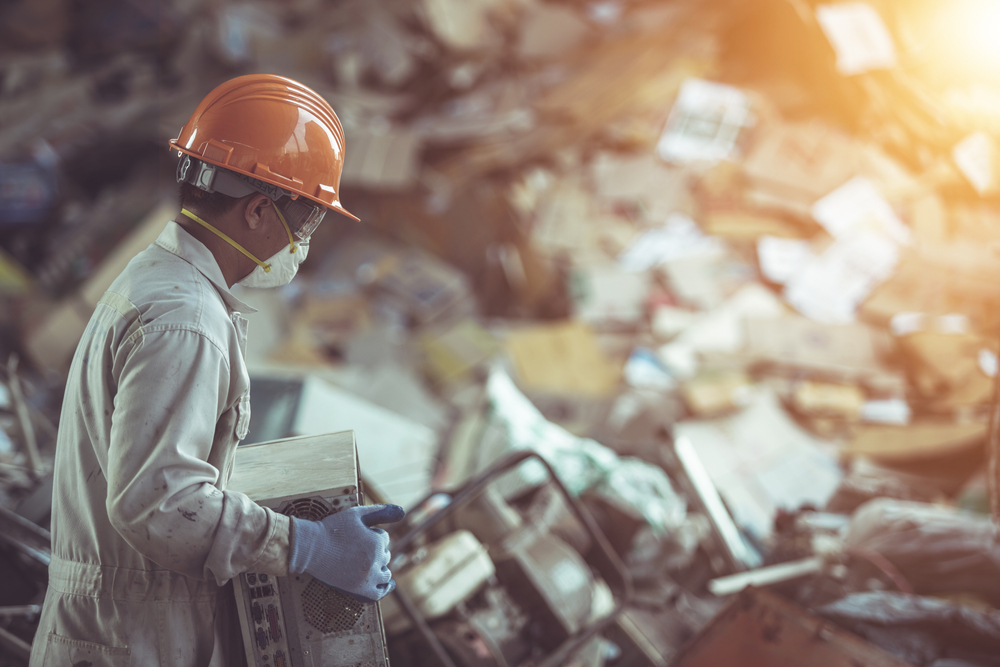In our rapidly advancing digital age, electronic devices have become an integral part of our daily lives. However, the improper disposal of these devices, known as e-waste, poses significant health risks to both workers and communities. E-waste contains a cocktail of toxic chemicals and heavy metals that can have severe consequences on human health and the environment.
Understanding E-Waste Composition
E-waste, or electronic waste, refers to discarded electronic devices such as computers, smartphones, televisions, and other appliances. These devices often contain hazardous materials, including:
- Lead: Found in circuit boards and glass of cathode ray tubes (CRTs).
- Mercury: Present in switches, batteries, and fluorescent lamps.
- Cadmium: Used in batteries and can cause kidney damage.
- Brominated flame retardants: Used in plastics, which can disrupt endocrine functions.
Health Risks Associated with E-Waste Exposure
Toxic Chemical Exposure
Workers and communities near e-waste recycling sites are at risk of exposure to harmful chemicals through inhalation, ingestion, and skin contact. Key health risks include:
- Organ Damage: Prolonged exposure to heavy metals can lead to liver and kidney damage. For instance, cadmium exposure is linked to renal dysfunction and bone disease.
- Cancer Risk: Chemicals such as lead and cadmium are classified as carcinogens, increasing the risk of various cancers among exposed individuals.
- Neurological Disorders: Exposure to lead and mercury can impair cognitive functions and lead to developmental issues in children.
Respiratory Issues
Improper disposal methods, such as burning e-waste, release toxic fumes that can lead to respiratory problems, including asthma and bronchitis. Studies have shown that air quality near e-waste recycling sites often exceeds safe limits for harmful pollutants.
Immediate Health Effects
Workers may experience acute health issues such as skin irritations, eye injuries, and respiratory distress due to direct contact with e-waste materials.
Long-Term Health Consequences
Chronic exposure to e-waste can cause severe long-term health consequences, including:
- Reproductive Issues: Pregnant women exposed to e-waste toxins may face complications such as low birth weight and developmental abnormalities in their children.
- DNA Damage: Research has linked chronic exposure to e-waste with DNA damage, immune system suppression, and increased oxidative stress, indicating long-term health consequences.
Vulnerable Populations
Certain groups are particularly at risk from e-waste exposure:
- Children: Young children are more susceptible to the effects of toxic substances, which can lead to developmental delays, behavioral issues, and cognitive impairments.
- Pregnant Women: Exposure during pregnancy can result in adverse neonatal outcomes, including low birth weight and developmental abnormalities.
Environmental Impact and Health Risks
Improper e-waste disposal not only affects human health but also leads to environmental contamination. Toxic substances can leach into soil and water, impacting ecosystems and public health:
- Soil and Water Contamination: Heavy metals from e-waste can contaminate local water supplies, affecting agriculture and drinking water quality.
- Air Pollution: Burning e-waste releases harmful chemicals into the atmosphere, contributing to air pollution and associated health issues.
Addressing the Health Risks of E-Waste
To mitigate the health risks associated with e-waste, it is crucial to implement proper disposal practices, ensure regulatory compliance, and raise public awareness. Key strategies include:
- Proper Recycling and Disposal Methods: Implementing responsible recycling and disposal methods to minimize exposure to toxic substances.
- Regulatory Compliance: Ensuring adherence to environmental regulations and safety standards to protect workers and communities.
- Public Awareness Campaigns: Educating the public about the dangers of e-waste and promoting safe recycling practices.
By understanding and addressing the health risks of e-waste, we can create a safer environment for both workers and the general public while promoting sustainable practices in electronic waste management.
Conclusion
The health risks associated with handling e-waste are significant and multifaceted, impacting both individuals directly involved in e-waste recycling and surrounding communities. Addressing these risks requires a collaborative effort involving workers, businesses, governments, and the public. By implementing proper disposal practices, ensuring regulatory compliance, and raising awareness, we can mitigate the harmful effects of e-waste and create a healthier future for all.

Leave a Reply